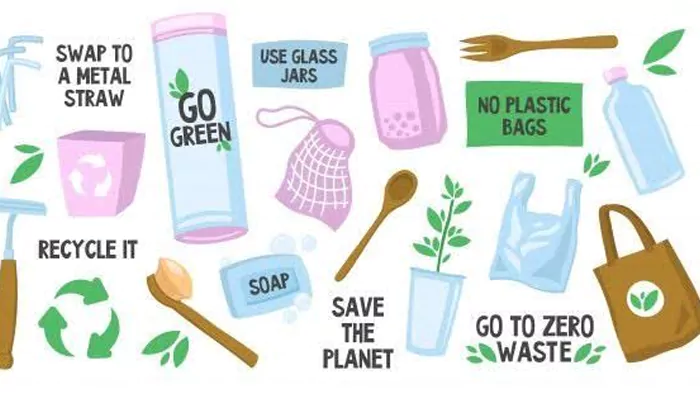Delhi's AQI In 'Poor' Category: Know How Air Pollution Affects The Food You Eat
- Sayan Paul
- 1 year ago
- 5 minutes read

Despite a slight improvement, Delhi's air quality remains detrimental to the residents.
With the cold season approaching, Delhi's air quality has worsened again just like every year, making headlines consistently for the past few days. The national capital's Air Quality Index (AQI) remained in the 'very poor' category for four days straight till Friday. And although it recorded a slight improvement on Saturday, it's still in the 'poor' category which is detrimental to public health.
The System of Air Quality and Weather Forecasting And Research (SAFAR) recorded an AQI of 237 on Saturday morning in the city, which is better than Friday’s AQI of 283. However, experts warn of a worsened pollution level in the coming days due to Diwali, potentially reaching the 'severe' category. The city's weather is also undergoing a rapid change, and the India Meteorological Department (IMD) predicts a notable drop in temperatures around October 30-31.

As far as the consequences of air pollution is concerned, we mostly think about the respiratory illnesses that it brings, (especially asthma in Delhi). However, what often goes unnoticed is its impact on the food we eat. And it's evident at literally every stage - from production to nutritional quality to food security and more. In this article, let's discuss how Delhi's air pollution is leading to malnutrition among the city's residents.
Polluted water + polluted soil = polluted homegrown foods.
— Dr. George (@GeorgeAnagli) September 23, 2024
If we don’t stop galamsey now, everyone’s health is at risk, and we may have to import even the fruits and vegetables that are grown here. This is not a joke!
(Credit: Dr. George)
First, Know About The Agriculture/Farming In Delhi
Being a densely populated city, Delhi depends a lot on its neighboring states (such as Punjab, Uttar Pradesh, and Haryana) for its food requirements. However, the region is also home to a vast land dedicated to agriculture and farming, mostly in what's categorized as 'urban villages'. The areas near the Yamuna River are the epicenter, while the rural areas of South and West Delhi are also ideal for agriculture. The list includes Chilla Khadar, Nangli Khadar, Mandpur Khadar, Najafgarh Jheel, Badarpur Khadar, Tikra Khurd, and Tikra Kala among others.
There's a range of crops, vegetables, and fruits produced here, including wheat, paddy, pulses, leafy greens, cruciferous vegetables, citrus fruits, and more.
Now, How Does Air Pollution Affect The Food You Eat?
There are several ways in which the food we eat is affected by air pollution.
It alters the soil's pH balance: The soil's pH is the foundation of its nutritional content, which nurtures the plants. However, pollutants like sulfur dioxide and nitrogen oxides (emitted from factories and vehicles) cause acid rain, disrupting the pH balance of the soil. This not only reduces plant growth but also leads to a major deficiency in their nutrition.
Ozone pollution, heavy metals, and more: Ozone is a strong oxidizing agent that reduces photosynthesis - the most important process behind a plant's growth. Studies have found that leafy greens (such as spinach and lettuce) lose their essential nutrients like lutein, beta-carotene, and vitamin E due to ozone pollution. On the other hand, the levels of protein, carbohydrates, and antioxidants also get affected by the same.
Cadmium, Lead, Arsenic and Mercury in even the “healthiest” versions of processed snacks pic.twitter.com/Oj66hZNoQs
— Robin Enochs (@RobinEnochs) October 19, 2024
(Credit: Robin Enochs)
Heavy metals like lead and mercury are present in industrial and vehicle emissions. They are easily absorbed by plants, which eventually enter the food that we eat. According to several studies, root crops like potatoes, carrots, and radishes contain high amounts of heavy metals today. Consuming them regularly can lead to serious health issues like kidney damage and neurological disorders.
Notably, a study published in the journal, Science Direct, reported an economic loss of around 5 billion USD for wheat and 1.5 billion USD for rice in India for ozone pollution.
Think your homegrown veggies are pure goodness?
— Kat Fu (@thekatfu) October 23, 2024
Think again.
Your proximity to urban air pollution could be polluting your garden with heavy metals.
How exactly is city air contaminating your soil?
These 5 heavy metals are increasingly present in urban gardens:
• Lead… pic.twitter.com/yxigYuqnnA
(Credit: Kat Fu)
Fog and smog: Fog and smog have become inseparable parts of winter in Delhi, thanks to the uncontrolled air pollution. They block out sunlight and rain, which are crucial for plants to grow. It affects the overall health of crops, reducing everything from their flavors to nutrients and beyond.

Air pollution is one of the major crises in Delhi, and the government is taking various measures to tackle the issue. As a consumer, you can opt for locally grown foods that you can trust, and rinse your food (fruits, vegetables, or millets) properly to remove pollutants from at least the surface.












